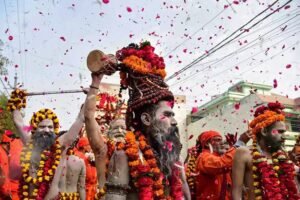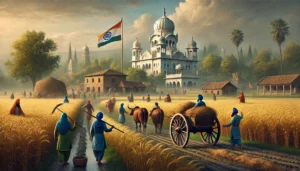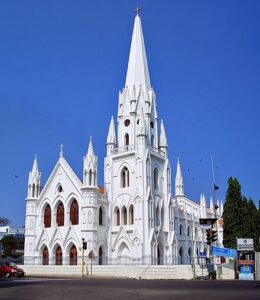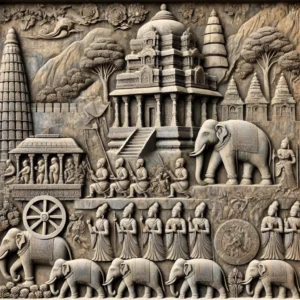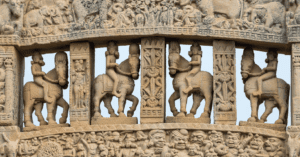Rani Ki Vav, (UNESCO World Heritage Site) an intricately designed and beautifully preserved stepwell, is an architectural masterpiece in Gujarat, India. This historical monument is located on the banks of the Saraswati River in the town of Patan. Here’s an in-depth look at its history, construction, purpose, its concealment for centuries, and its eventual rediscovery.
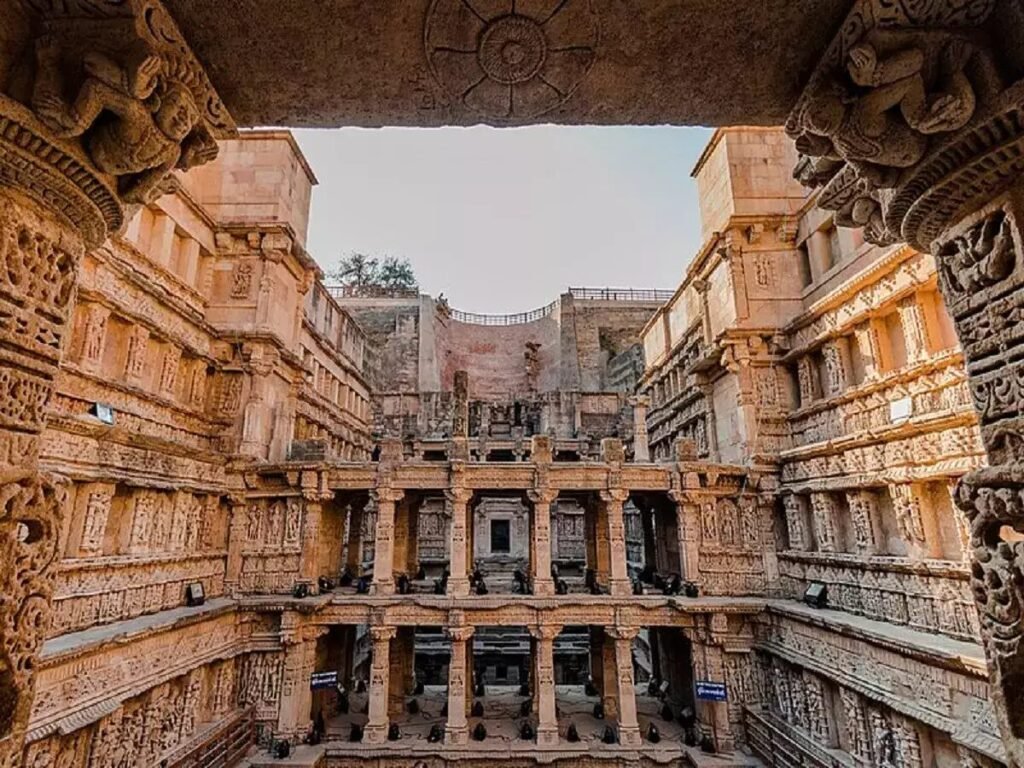
1. Rani Ki Vav – Historical Background
- Built By: The stepwell was commissioned by Queen Udayamati, the widow of King Bhima I, a ruler of the Solanki Dynasty (also known as the Chalukya Dynasty), in the 11th century CE.
- Construction Period: It was constructed around 1063 CE, during the reign of Bhima I. Queen Udayamati built the well in memory of her husband, making it a monument of both practical and commemorative importance.
- The Solanki dynasty, to which Bhima I belonged, was known for its magnificent architectural works, and Rani Ki Vav was no exception. The stepwell reflects the grandeur of the Solanki style and was a way to provide water while honoring the deceased king.

2. Purpose and Symbolism
- Water Resource: Stepwells were designed to manage water in arid regions of India, and Rani Ki Vav served as a source of groundwater during the dry seasons. These structures were common in Gujarat, Rajasthan, and other parts of India to tackle seasonal water shortages.
- Memorial to King Bhima I: It was built as a memorial to King Bhima I. Stepwells often had dual functions: they were utilitarian, providing water, and they also served as a symbol of prosperity and devotion. Rani Ki Vav, in particular, exemplifies this duality, blending engineering and art.
- Religious Symbolism: The stepwell also holds spiritual significance. The carvings and sculptures within Rani Ki Vav depict various deities, primarily focusing on Vishnu in his Dashavatara (ten incarnations) form, alongside other celestial beings and mythological stories. The stepwell represents the descent to the earth’s womb and symbolizes life, death, and rebirth.
3. Architectural Marvel
Seven Levels of Artistry:
Rani Ki Vav is an inverted temple in design, showcasing seven levels of intricate carvings and sculptural work as one descends into the well. Each level is adorned with detailed figurines and motifs.
Rani Ki Vav is not only significant for its intricate sculptures but also for its massive scale and architectural complexity.
- Length: The stepwell measures 65 meters (213 feet) long.
- Width: It spans 20 meters (66 feet) wide.
- Depth: The well itself is 27 meters (89 feet) deep, descending through a series of levels, each adorned with elaborate carvings.
- These dimensions make Rani Ki Vav one of the largest and most impressive stepwells in India. Its sheer size is a testament to the engineering prowess of the Solanki dynasty, while its intricate sculptures reflect the cultural and artistic richness of the time.
Sculptures and Carvings: The Artistic Masterpieces
Rani Ki Vav is home to some of the most intricate and well-preserved sculptures found in any ancient Indian monument. The stepwell contains over 500 principal sculptures and approximately 1,000 minor ones, showcasing a stunning blend of religious and daily life imagery. Most of the sculptures are of Hindu deities, with Vishnu in various forms being the most prominent. Other carvings represent apsaras (celestial dancers), sages, and ordinary people.
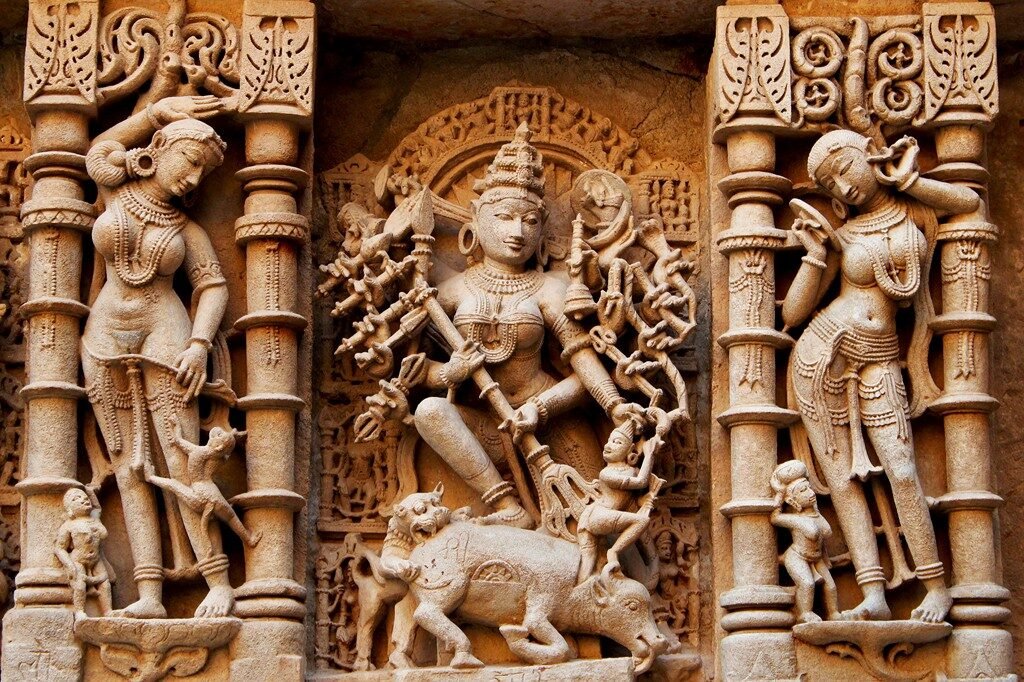
Key Features of the Sculptures:
Religious Themes: Many of the carvings focus on Hindu mythology, with particular emphasis on Vishnu, the preserver deity in the Hindu Trinity (Trimurti).

Dashavatara of Vishnu: The most prominent carvings depict Vishnu in his Dashavatara, or his ten incarnations. These include: Matsya (The Fish), Kurma (The Tortoise), Varaha (The Boar), Narasimha (The Man-Lion), Vamana (The Dwarf), Parashurama (The Warrior Sage), Rama (The Prince), Krishna (The Divine Cowherd), Buddha (The Enlightened One), Kalki (The Future Warrior)
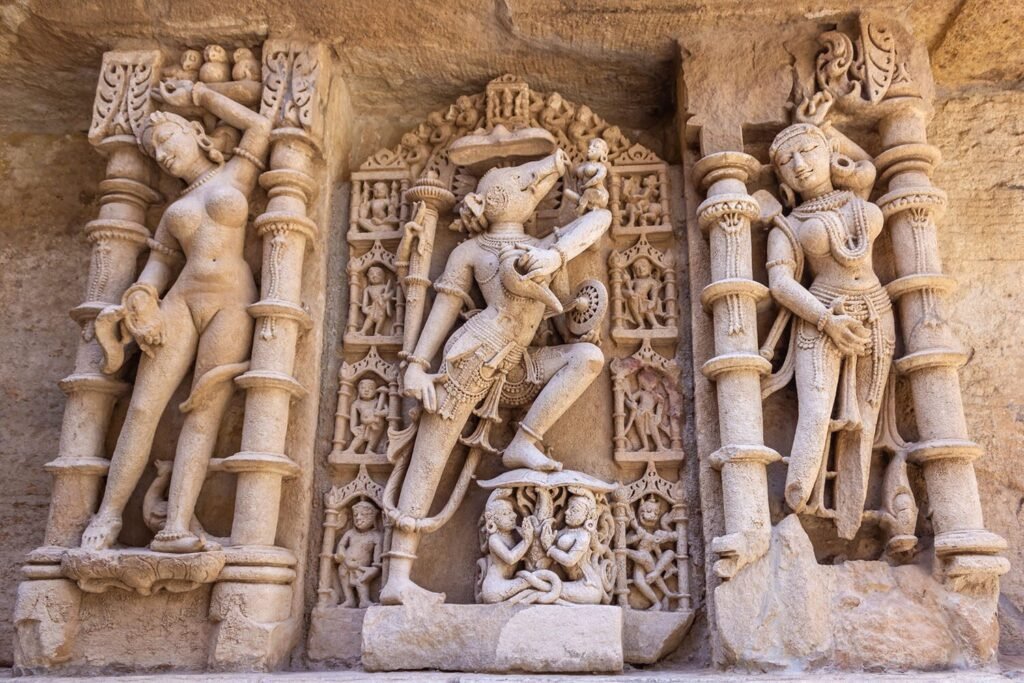
Apsaras and Yoginis: There are numerous sculptures of apsaras (celestial maidens) and yoginis (female ascetics). These figures are often depicted in elegant, sensuous poses, showing the remarkable attention to detail in their form and expressions. The apsaras are seen performing various activities, such as adorning themselves or dancing, representing beauty, grace, and divine femininity.
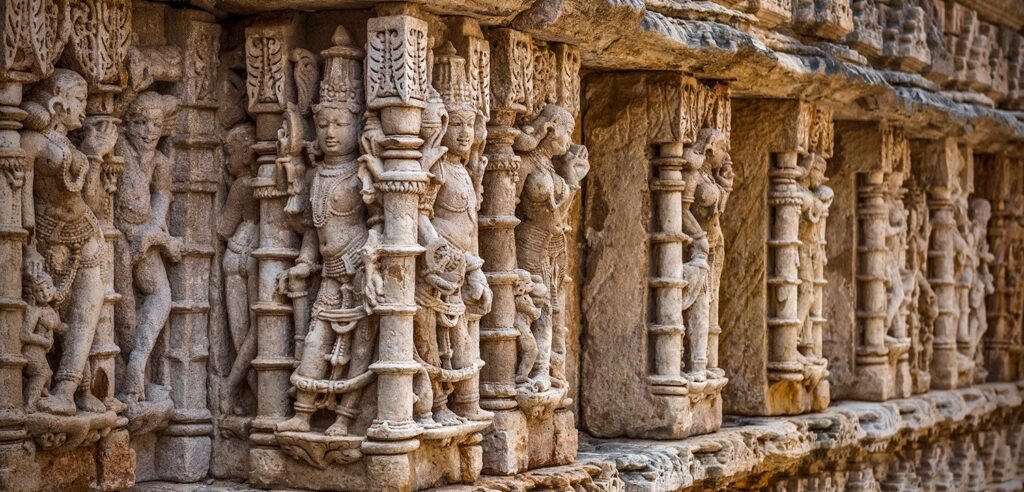
Hindu Epics: Some of the carvings depict scenes from Hindu epics like the Ramayana and Mahabharata, telling stories of gods, kings, sages, and battles. These narrative scenes are vital in understanding the mythological and cultural values of the time.
Daily Life: In addition to the religious motifs, the stepwell also features depictions of daily life during the Solanki period. You can find carvings of musicians, dancers, hunters, and ordinary people engaged in their daily activities. This gives historians a glimpse into the societal structure and cultural norms of the 11th century.
4. How It Remained Hidden for Centuries
Submersion by Flooding: In the 13th century, the Saraswati River began flooding the region, gradually submerging the stepwell. Over time, sediment and earth buried the structure completely, and its exact location was forgotten.
Silt Accumulation: As the Saraswati River changed course and eventually dried up, layers of silt and debris settled over the stepwell. This natural buildup not only concealed the well but also protected its intricate carvings from erosion, weathering, and human interference.
5. Rediscovery and Restoration
Rediscovery in the 1940s: The stepwell remained buried until the 1940s when the Archaeological Survey of India (ASI) began excavating the site. Upon discovery, archaeologists and historians were astounded by the beauty and intricacy of the stepwell, which was in a remarkably well-preserved state despite being buried for centuries.
Restoration Efforts: After its rediscovery, ASI undertook extensive restoration work to clear the silt, clean the carvings, and ensure the structural integrity of the monument. It was finally restored to its near-original condition, allowing visitors to experience its grandeur.
UNESCO World Heritage Site: In 2014, Rani Ki Vav was recognized as a UNESCO World Heritage Site due to its cultural significance, architectural splendor, and the exceptional quality of its preservation.
6. Unique Architectural Features
Inverted Temple Design: The stepwell’s design as an inverted temple symbolizes the veneration of water. It begins with a broad, stepped passage that descends down to the well shaft, and each level is intricately carved.
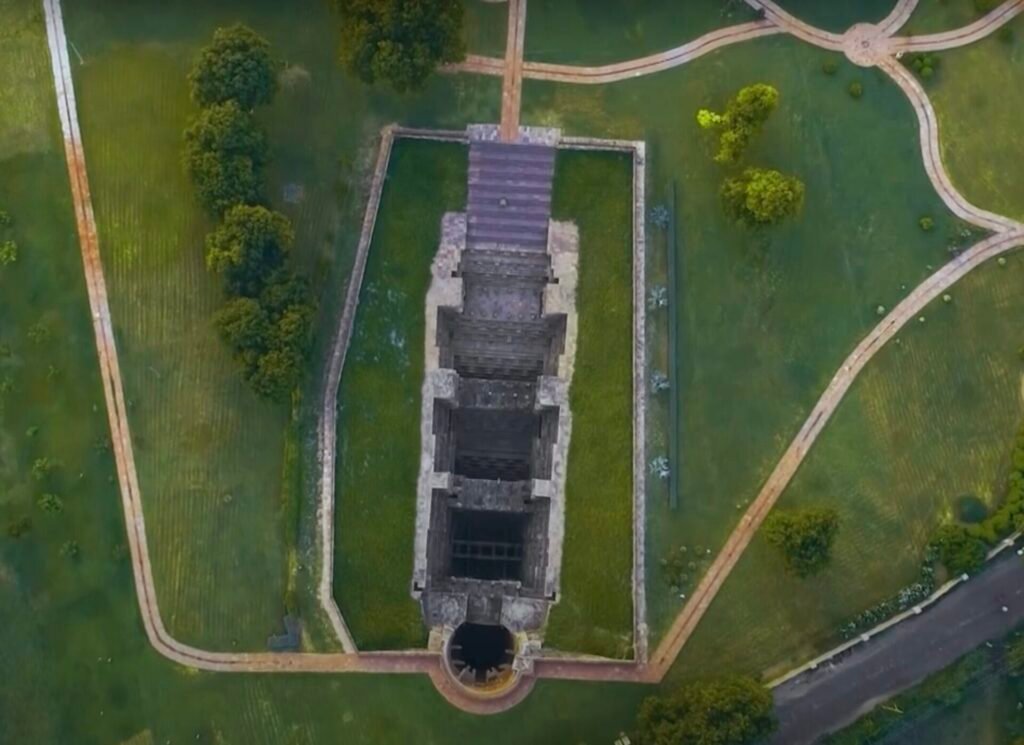
Water Management: Besides being a place of reverence and beauty, Rani Ki Vav was also designed with precision to manage water efficiently. The well, at the bottom, was constructed to access the underground water table, allowing water to be stored and accessed even during droughts.
Sculptural Themes: The primary deity of focus in Rani Ki Vav is Vishnu, and several of his avatars are depicted. Besides religious figures, the stepwell also contains sculptures that celebrate everyday life, mythological events, and folklore. This variety highlights the artistic and cultural diversity of the time.
7. Why Are the Sculptures So Well-Preserved?
The sculptures of deities and figurines at Rani Ki Vav have survived almost a millennium in remarkable condition due to several factors:
Burial Under Silt: The flooding and subsequent burial under sediment preserved the sculptures for centuries. The layer of silt shielded the carvings from the elements, erosion, and human damage.
High-Quality Sandstone: Constructed with durable, weather-resistant sandstone, the sculptures have remained intact over time. This choice of material not only enabled detailed carving but also ensured long-lasting preservation.
Limited Exposure to Modern Damage: Hidden for centuries, the stepwell avoided exposure to modern pollution, vandalism, and other destructive forces. Rediscovered in its original state, it has largely retained its historical magnificence.

8. Legacy and Cultural Significance
Rani Ki Vav is a testament to the advanced architectural and artistic skills of the Solanki dynasty. Its preservation, due to being buried for centuries, allowed future generations to appreciate the intricate craftsmanship and the cultural values of the time.
With its designation as a UNESCO World Heritage Site, Rani Ki Vav continues to draw the admiration of visitors and scholars alike, standing as a monument to both practical utility and deep-seated reverence for water in Indian culture. The fact that it was commissioned by a queen in memory of her husband adds a personal, emotional layer to its history.
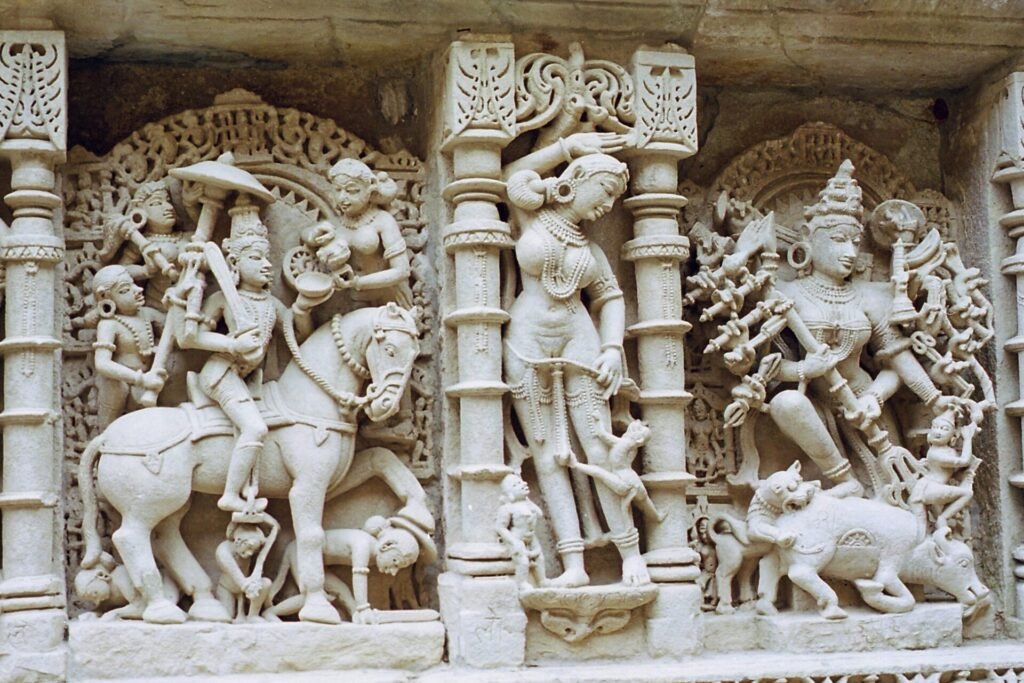
Today, it stands as one of India’s finest examples of stepwell architecture and provides insight into the technological advancements, artistic traditions, and cultural practices of medieval India.

